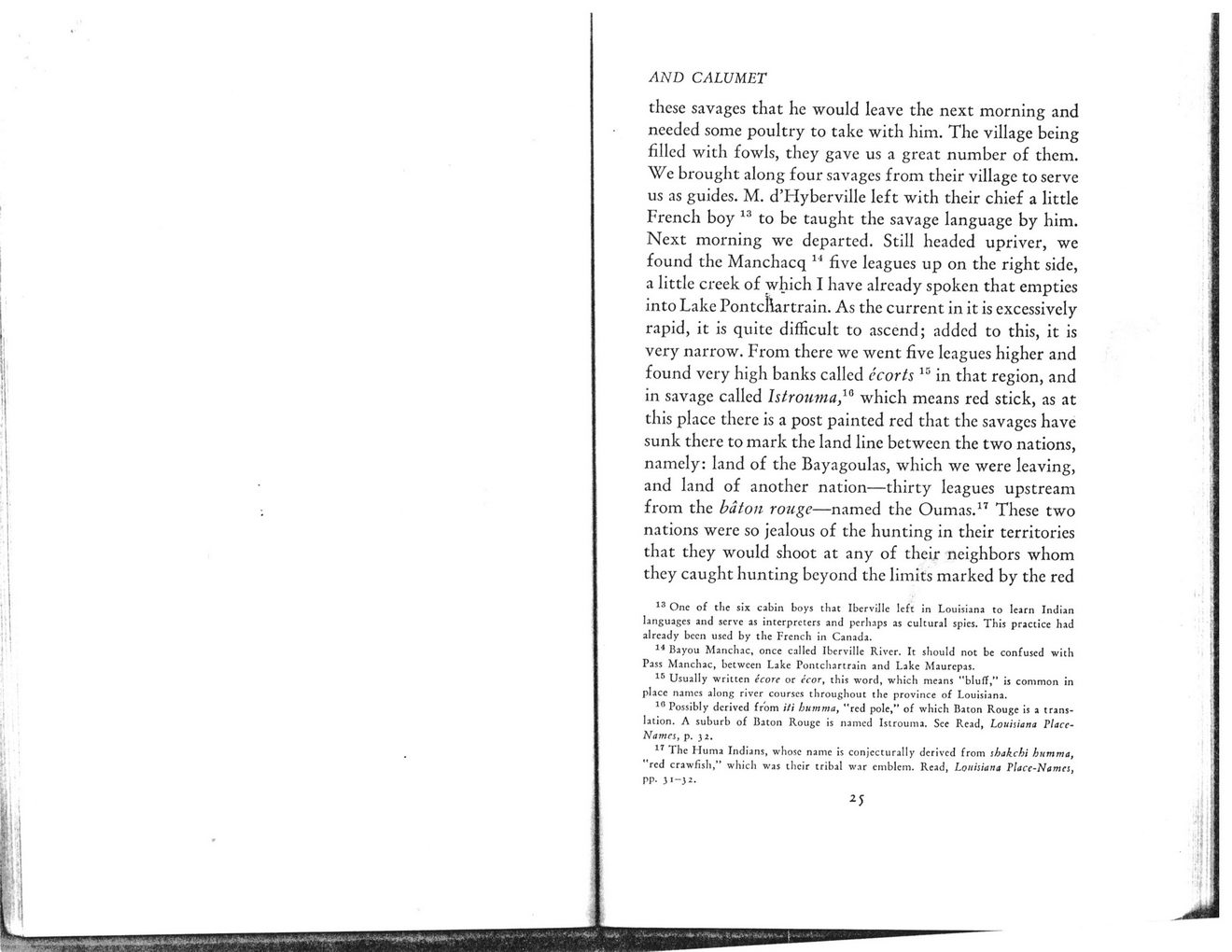This text was obtained via automated optical character recognition.
It has not been edited and may therefore contain several errors.
1 * i AND CALUMET these savages that he would leave the next morning and needed some poultry to take with him. The village being filled with fowls, they gave us a great number of them. We brought along four savages from their village to serve us as guides. M. d’Hyberville left with their chief a little French boy 13 to be taught the savage language by him. Next morning we departed. Still headed upriver, we found the Manchacq 14 five leagues up on the right side, a little creek of which I have already spoken that empties into Lake Pontcllartrain. As the current in it is excessively rapid, it is quite difficult to ascend; added to this, it is very narrow. From there we went five leagues higher and found very high banks called ecorts 15 in that region, and in savage called lstrouma,10 which means red stick, as at this place there is a post painted red that the savages have sunk there to mark the land line between the two nations, namely: land of the Bayagoulas, which we were leaving, and land of another nation—thirty leagues upstream from the baton rouge—named the Oumas.17 These two nations were so jealous of the hunting in their territories that they would shoot at any of their neighbors whom they caught hunting beyond the limits marked by the red 13 One of the six cabin boys that Iberville left in Louisiana to learn Indian languages and serve as interpreters and perhaps as cultural spies. This practice had already been used by the French in Canada. 14 Bayou Manchac, once called Iberville River. It should not be confused with Pass Manchac, between Lake Pontchartrain and Lake Maurepas. 15 Usually written ecore or ecor, this word, which means "bluff," is common in place names along river courses throughout the province of Louisiana. 10 Possibly derived from iti humma, "red pole," of which Baton Rouge is a translation. A suburb of Baton Rouge is named lstrouma. See Read, Louisiana Vlacc-Names, p. 32. 17 The Huma Indians, whose name is conjecturally derived from sbakchi humma, "red crawfish,” which was their tribal war emblem. Read, Louisiana Placc-Namcs, pp. 3 1-3 2. 15

Penicaut Narrative Document (017)